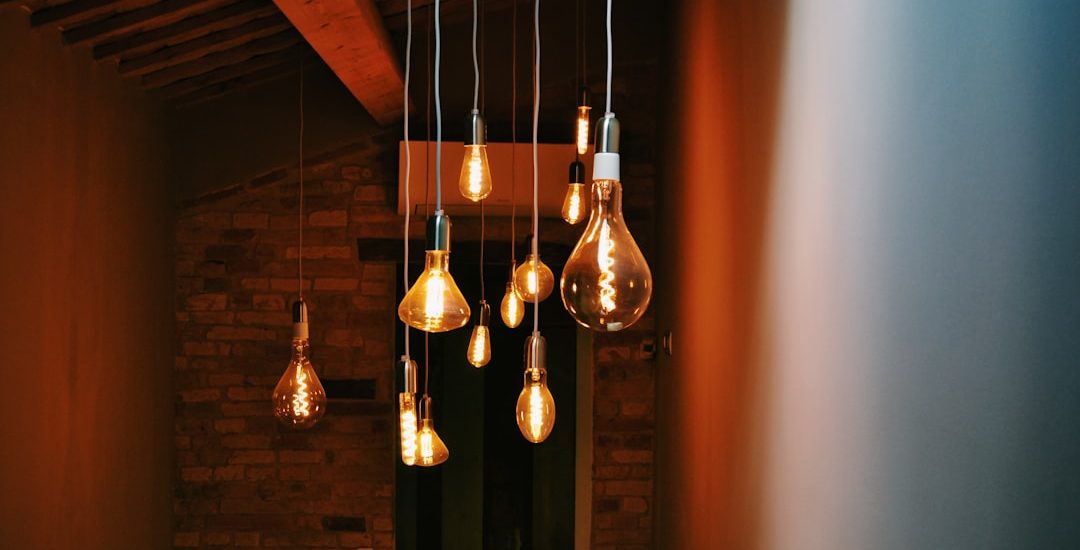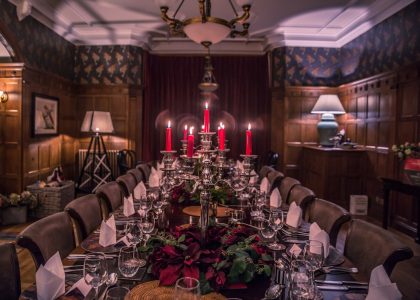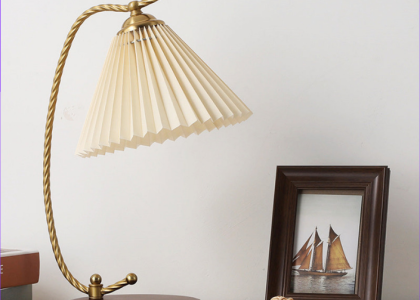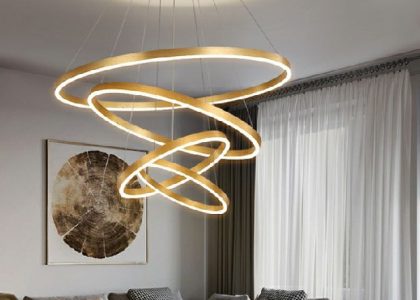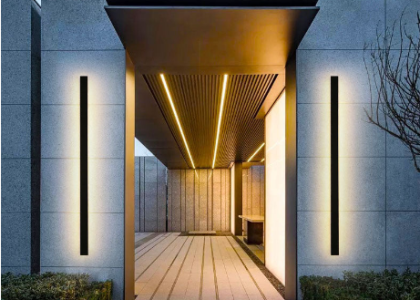Pendant lights have a significant impact on the overall ambiance and functionality of a space. These versatile lighting fixtures can instantly elevate the look and feel of any room, adding a touch of elegance and sophistication. Whether used in the kitchen, dining area, living room, or bedroom, pendant lights can create a focal point and enhance the aesthetic appeal of the space. The soft, warm glow emitted by pendant lights can also create a cozy and inviting atmosphere, making them perfect for entertaining guests or simply relaxing at home.
In addition to their aesthetic appeal, pendant lights also serve a practical purpose by providing focused task lighting. When installed over kitchen islands or dining tables, pendant lights can illuminate the work surface, making it easier to prepare meals or enjoy a family dinner. In the living room, they can be used to highlight specific areas or objects, such as a reading nook or a piece of artwork. With the wide variety of styles, sizes, and designs available, pendant lights can be customized to suit any space and complement the existing decor, making them a versatile and valuable addition to any home.Tomosshop
Pendant lights also have the ability to visually expand a space and create the illusion of height. By drawing the eye upward, pendant lights can make a room feel more open and airy, especially in rooms with low ceilings. This makes them an ideal lighting solution for smaller spaces or rooms with limited natural light. Additionally, pendant lights can be used to define different zones within an open-concept living area, helping to create a sense of separation and organization within the space. Overall, the impact of pendant lights on a space is undeniable, as they have the power to transform the look and feel of any room while serving a practical purpose.
Choosing the Right Style for Your Home
When it comes to choosing pendant lights for your home, there are several factors to consider in order to select the right style that complements your space and reflects your personal taste. The first consideration is the overall design aesthetic of your home. Whether your home has a modern, traditional, industrial, or eclectic style, there are pendant light options available to suit every preference. For a modern and minimalist look, sleek and simple pendant lights with clean lines and geometric shapes are ideal. On the other hand, if your home has a more traditional or rustic feel, pendant lights with ornate details, warm finishes, and vintage-inspired designs may be more suitable.
Another important factor to consider is the size and scale of the pendant lights in relation to the space where they will be installed. In larger rooms with high ceilings, oversized pendant lights can make a bold statement and become a focal point. In smaller spaces, such as entryways or bathrooms, smaller pendant lights can add a touch of elegance without overwhelming the area. It’s also important to consider the placement of the pendant lights and how they will interact with other elements in the room, such as furniture, architectural features, and natural light.
The material and finish of the pendant lights are also crucial in determining the overall style and ambiance they will create. Glass pendant lights can add a touch of sophistication and sparkle to a space, while metal or wood finishes can bring warmth and texture. The type of light emitted by the pendant lights should also be taken into account, as different styles and designs can produce varying effects, from soft ambient lighting to focused task lighting. By carefully considering these factors and exploring different styles and options, you can choose pendant lights that not only enhance your home’s interior design but also reflect your personal style and preferences.
How to Properly Install Pendant Lights
Proper installation of pendant lights is essential to ensure their safety, functionality, and aesthetic appeal in your home. Before beginning the installation process, it’s important to carefully read and follow the manufacturer’s instructions that come with the pendant lights. If you’re not comfortable with electrical work or if the installation requires complex wiring, it’s best to hire a professional electrician to ensure that the job is done correctly and safely.
The first step in installing pendant lights is to determine the placement and height at which they will be hung. In general, pendant lights should be positioned so that they provide ample illumination without obstructing views or creating glare. When installing pendant lights over a dining table or kitchen island, they should typically be hung 28-34 inches above the surface to provide optimal task lighting. In entryways or foyers, pendant lights should be hung higher to allow for adequate clearance when entering and exiting the space.
Once the placement and height have been determined, the next step is to install the mounting hardware and electrical components. This may involve removing existing light fixtures or making adjustments to the electrical wiring in the ceiling. It’s important to turn off the power at the circuit breaker before beginning any electrical work to prevent accidents or injuries. After the mounting hardware is in place, the pendant lights can be attached and secured according to the manufacturer’s instructions.
Finally, it’s essential to test the pendant lights to ensure that they are functioning properly before completing the installation process. This includes checking that all connections are secure, bulbs are properly installed, and any dimmer switches or controls are working as intended. By following these steps and taking necessary safety precautions, you can properly install pendant lights in your home to enhance its ambiance and functionality.
Enhancing Your Interior Design with Pendant Lights
Pendant lights are an excellent way to enhance your interior design by adding visual interest, creating focal points, and complementing existing decor. With their wide range of styles, shapes, sizes, and materials, pendant lights can be used to make a bold statement or subtly accentuate different areas of your home. In open-concept living spaces, strategically placed pendant lights can help define different zones for dining, lounging, or entertaining while adding a cohesive element to the overall design.
In addition to their aesthetic appeal, pendant lights can also be used to highlight architectural features or specific design elements within a room. For example, in rooms with high ceilings or exposed beams, oversized pendant lights can draw attention upward and emphasize the vertical dimension of the space. In kitchens with beautiful countertops or islands, pendant lights can be used to showcase these features while providing practical task lighting for food preparation and cooking.
The versatility of pendant lights also allows them to be used as decorative accents that tie together different design elements in a room. Whether you choose sleek and modern pendant lights for a contemporary space or vintage-inspired designs for a more traditional setting, pendant lights have the ability to enhance your interior design by adding texture, warmth, and personality. By carefully selecting pendant lights that complement your existing decor and reflect your personal style, you can elevate the overall look and feel of your home while creating a cohesive and harmonious design scheme.
Using Pendant Lights to Create Ambiance
Pendant lights are an effective way to create ambiance in any room by providing soft, warm illumination that enhances the mood and atmosphere. Whether used as primary sources of light or as supplementary fixtures, pendant lights can be customized to produce different effects that contribute to the overall ambiance of a space. By choosing the right style, size, and placement of pendant lights, you can achieve various lighting effects that range from intimate and cozy to bright and expansive.
One way to use pendant lights to create ambiance is by incorporating dimmer switches or adjustable controls that allow you to customize the intensity of the light. This gives you the flexibility to adjust the lighting according to different activities or occasions, such as dimming the lights for a romantic dinner or increasing brightness for reading or working. Pendant lights with frosted or tinted shades can also help diffuse light and create a soft, diffused glow that adds warmth and intimacy to a room.
Another technique for creating ambiance with pendant lights is by using multiple fixtures to layer light throughout a space. By combining different types of pendant lights, such as ambient, task, and accent lighting, you can create depth and dimension that adds visual interest and enhances the overall ambiance. For example, in a living room or bedroom, a combination of overhead pendant lights with wall sconces or floor lamps can create a layered lighting scheme that adds depth and warmth.
The color temperature of the light emitted by pendant lights also plays a crucial role in setting the ambiance of a room. Warm white or soft white bulbs can create a cozy and inviting atmosphere that is perfect for relaxation and socializing, while cool white bulbs can produce a bright and energizing effect that is ideal for task-oriented spaces such as kitchens or home offices. By considering these factors and experimenting with different lighting techniques, you can use pendant lights to create ambiance that enhances the overall mood and atmosphere of your home.
Incorporating Pendant Lights into Different Rooms

Pendant lights can be incorporated into different rooms throughout your home to add style, functionality, and visual interest. In the kitchen, pendant lights are commonly used over islands or peninsulas to provide task lighting for food preparation and cooking while adding a decorative element to the space. When choosing pendant lights for the kitchen, it’s important to consider factors such as size, scale, and placement in order to achieve optimal illumination without obstructing views or creating glare.
In dining areas, pendant lights are often used to create a focal point above the table while providing ambient lighting for meals and gatherings. The size and shape of the dining table should be taken into account when selecting pendant lights to ensure that they are proportionate and balanced within the space. Additionally, adjustable pendant lights with dimmer switches can be used to create different lighting effects for formal dinners or casual gatherings.
Pendant lights can also be used in bedrooms to add style and functionality while freeing up valuable surface space on nightstands or dressers. Whether used as bedside lighting or as decorative accents above seating areas or vanities, pendant lights can create a cozy and intimate atmosphere while adding visual interest to the room. In larger bedrooms with high ceilings, oversized pendant lights can make a bold statement while emphasizing the vertical dimension of the space.
In living rooms and entryways, pendant lights can be used as decorative accents that add personality and style while providing ambient lighting for everyday activities. Whether used as standalone fixtures or combined with other types of lighting such as recessed ceiling lights or floor lamps, pendant lights can help create a layered lighting scheme that enhances the overall ambiance of these spaces. By incorporating pendant lights into different rooms throughout your home, you can add style and functionality while enhancing the overall design aesthetic.
Maintenance and Care for Your Pendant Lights
Proper maintenance and care for your pendant lights are essential in order to ensure their longevity, performance, and aesthetic appeal. Regular cleaning is an important part of maintaining pendant lights as dust, dirt, and grime can accumulate on surfaces over time and diminish their appearance. To clean glass or metal pendant lights, simply use a soft cloth dampened with water or glass cleaner to gently wipe away any residue. For fabric shades or intricate designs, it’s best to use a soft brush attachment on a vacuum cleaner to remove dust without causing damage.
In addition to cleaning, it’s important to regularly inspect the electrical components of pendant lights to ensure that they are functioning properly and safely. This includes checking for loose connections, frayed wires, or signs of wear that may indicate potential issues. If you notice any problems with the electrical components of your pendant lights, it’s important to address them promptly by contacting a professional electrician for repairs or replacements.
Another aspect of maintenance for pendant lights is ensuring that they are properly installed and supported to prevent accidents or damage. Over time, vibrations from nearby activities or movements within a space can cause pendant lights to become loose or unstable. It’s important to periodically check that mounting hardware is secure and that pendant lights are properly supported to prevent them from falling or becoming damaged.
Finally, it’s important to follow any specific care instructions provided by the manufacturer for your particular type of pendant lights. This may include recommendations for bulb replacements, adjustments for dimmer switches or controls, or guidelines for specific materials or finishes. By following these maintenance tips and taking proper care of your pendant lights, you can ensure that they continue to enhance your space with their beauty and functionality for years to come.
By following these maintenance tips and taking proper care of your pendant lights, you can ensure that they continue to enhance your space with their beauty and functionality for years to come. Regular cleaning and dusting can help maintain the appearance of the lights, while addressing any issues promptly can prevent further damage. Additionally, keeping an eye on the condition of the electrical components and making any necessary repairs or replacements can help ensure the safety and longevity of your pendant lights. If you ever have any concerns or questions about the care of your pendant lights, don’t hesitate to reach out to the manufacturer or a professional for guidance.

